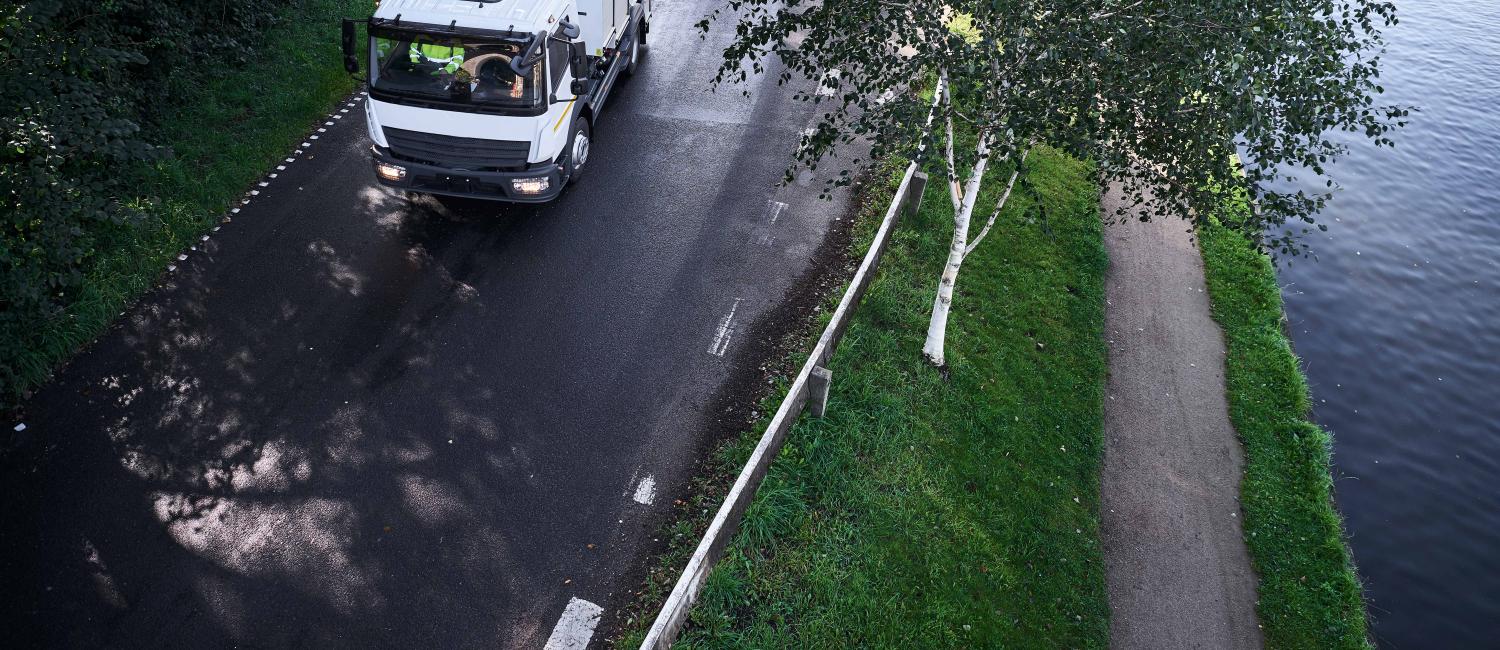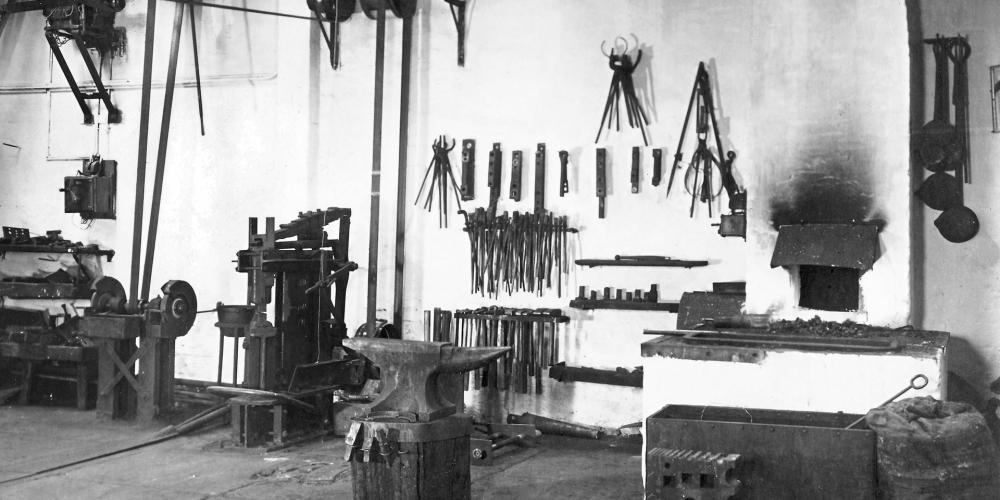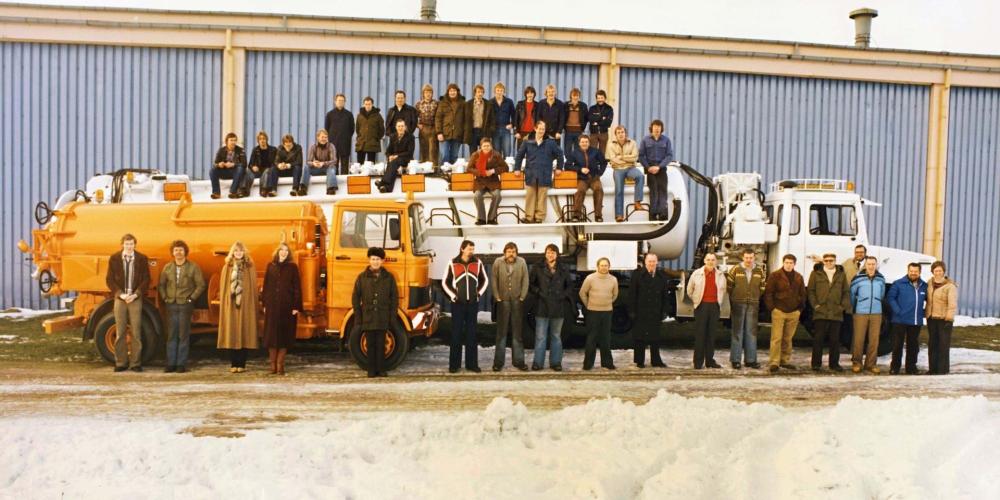The story of
J. Hvidtved Larsen
What started over 100 years ago as a small blacksmith’s shop was in Denmark was built over generations to a global manufacturer of sewer cleaning equipment. Founded in 1915 and named after its founder, Jacob Hvidtved Larsen, J. Hvidtved Larsen received recognition for its craftmanship and high quality for more than 100 years. In 2016, J. Hvidtved Larsen was acquired by Bucher Industries and sewer cleaning equipment officially become a part of the group's municipal fleet program.
Until 1955, J. Hvidtved Larsen completed many different tasks for clients in Denmark; among others roof constructions and crane building. In 1956, the first vacuum cleaner was delivered to a local customer. After a short period of time, demand grew and the production gradually turned into focusing more on the development, engineering and production of sewer cleaning equipment. The product range expanded and in 1985, the first water recycling unit was born. An adventure for J. Hvidtved Larsen was underway.
Open for business
Jacob Hvidtved Larsen, founder of J. Hvidtved Larsen, took the first step and became independent in 1915 with his own blacksmith and machine factory in Silkeborg, Denmark. It started out small with a number of repair tasks in the local area, but the income was supplemented with the profession of driving instructor. As Jacob received recognition from his high quality work, the orders started to come quickly. First, it was local slaughterhouses, but soon well-known institutions such as FL Smidth, Danish Railroad Services and Hjejlen placed orders. Today, Hjejlen is the world's oldest steamship that continues to operate as a tourist attraction in the local city where J. Hvidtved Larsen was established. On the picture below, the premises where J. Hvidtved Larsen started what ended up becoming the adventure of a lifetime.
From repairs to engineering
It was not just the number of customers that grew. Also, the magnitude of tasks changed over the years. In 1933, the first 12 cubic meter tank was delivered to a textile factory, and suddenly Jacob Hvidtved Larsen found himself being a key supplier to several national institutions in Denmark, supplying solid iron structures used in building leisure centers, bridges, and ferry docks. In the backyards in the local city, Jacob Hvidtved Larsen was running out of space as the order book was growing rapidly. In fact, some products could no longer be produced inside the factory buildings and in the early 1950's, when Jacob Hvidtved Larsen received an order for something completely new, it was clear he had to move the company.
In 1955, it happened. A Danish contractor asked Jacob to build a truck mounted vacuum cleaner. At that time, the factory worked on a bit of everything and, consequently, this request was not rejected. In 1956, the vecuum cleaner was ready for delivery.
New adventures
During the 1960's, the order book on truck mounted vacuum cleaners grew rapidly, and with the new product portfolio, the premises were for sure too small. Moving outside the city, the factory was expanded to 1,200 sqm., enabling the production of vacuum cleaners but also the iron structures that still proved to be a central part of the business. In the 1960's, the Municipality of Aarhus and private contractor, Leif M. Jensen placed orders on their first vacuum units and soon the truck mounted equipment was further developed as customers realised a need for truck mounted equipment capable of vacuum cleaning and high-pressure jetting. To this day, Municipality of Aarhus and Leif M. Jensen remain customers with Bucher Municipal.
Sewer cleaners prosper
In the 1970's and 1980's, sewer cleaners were a critical part of the J. Hvidtved Larsen business. As the production and sales grew in parallel with the smitting and machine business, the group of staff grew rapidly and soon it was clear that the management had to decide which route to follow. At this point in time, the grandson of Jacob Hvidtved Larsen was running the family business and in the early 1990's, he decided to seperate the blacksmith's shop from the remaining operations. At this point in time, J. Hvidtved Larsen only produced sewer cleaning equipment and more people joined the fast-growing company in Denmark.
All over the world
In the following years, J. Hvidtved Larsen invested heavily in the production, innovation and engineering of sewer cleaning equipment. Among other things, the FlexLine® concept was introduced with a moveable partition and soon thereafter, the first water recycling equipment, the RECycler®, was introduced to the market as was CityFlex® later. Since then, the concepts have been perfected and new generations introduced while staying true to the original concept: Offer what is best for the customer.
In the '00s the export adventure really took off. Up to two-thirds of J. Hvidtved Larsen's total production of sewer cleaners crossed over Denmark's borders. The big customers were, among others, England and several Eastern European countries. But Australia, New Zealand, and North America also noticed the quality product from Denmark. In 2012, J. Hvidtved Larsen introduced the specially developed RECycler® for North America, marking the entry of European technology alongside the concept of water recycling just as the lack of water clan water hid the headlines.
Bucher Municipal Sewer & Drainage
In 2016, J. Hvidtved Larsen became a part of Bucher Municipal and therefore fully embarked on the journey to bring sewer cleaning units from Denmark to every corner of the world; from the extreme cold of Siberia to the extreme heat of the deserts, you will find sewer cleaning units from Denmark solving the most demanding tasks. Building on more than 100 years of history, J. Hvidtved Larsen is a proud member of Bucher Municipal in offering customers the best tools available in securing a sustainable, clean and safe city.
See all Sewer Cleaning products





